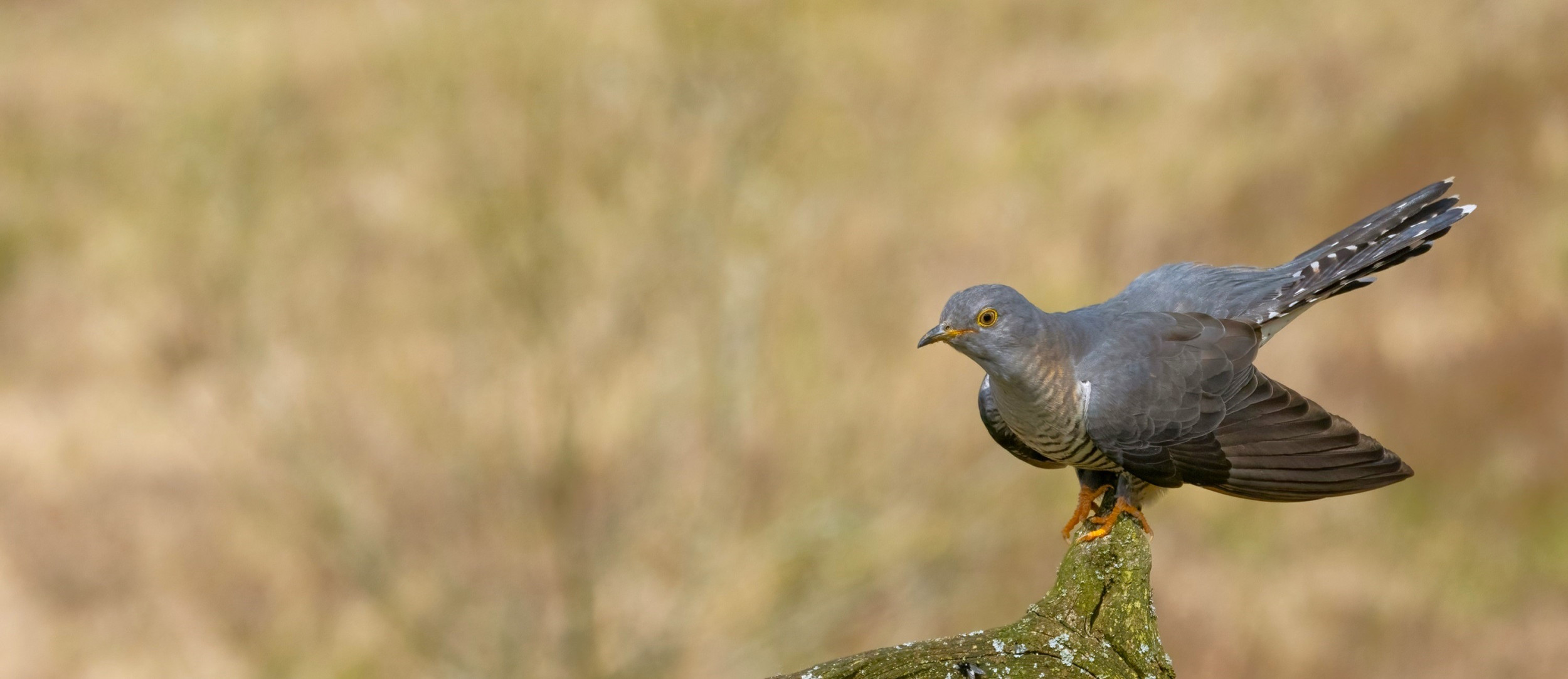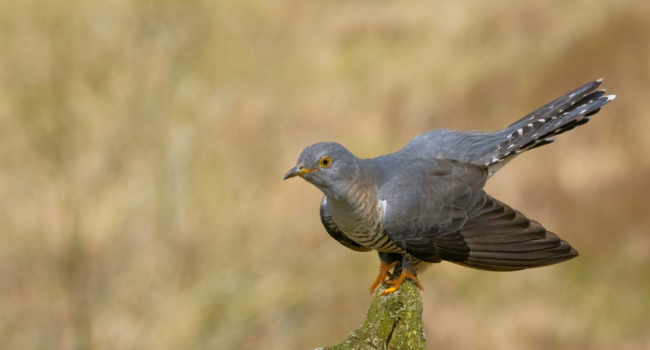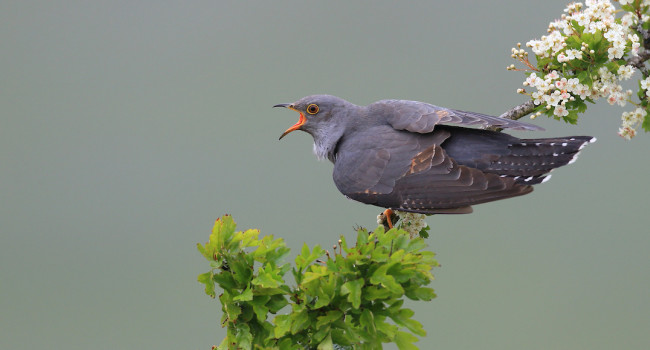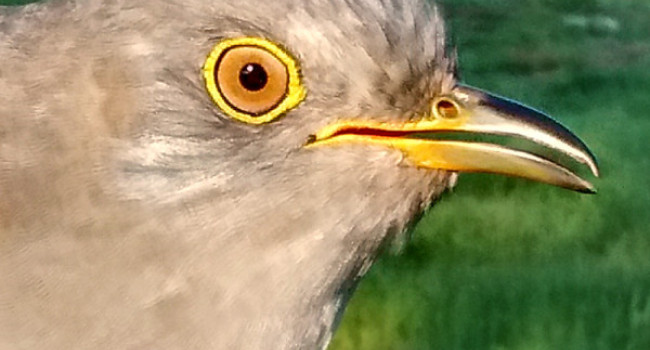The last signals from Jake's tag were back in mid-January when he was in Congo but recently received signals mean that he is back on the map and all appears to be well. He, like several of the other Cuckoos, has travelled west. His last location was in Benin, close to the border with Togo, in West Africa.
Updates from our Cuckoos
Read the latest updates from our Cuckoos on their epic migration between the UK and tropical Africa, or track their movements in real-time on our Cuckoo migration map.
- If you enjoy these updates, please consider sponsoring a Cuckoo. Sponsors receive special updates about their chosen Cuckoo in the Cuckoo e-newsletter.
Jake reappears after silence
Livingstone makes mammoth flight
At 00.27am on 15 March, Livingstone's tag transmitted from Cameroon. Over the next 18 hours he went on to fly over Nigeria, Benin and Togo to reach Ghana by 18.00pm on the same day. This mammoth trip is roughly 1450km (915 miles) long which means he was probably travelling at an average speed of just under 50mph!
He probably started off from his previous position in Central African Republic earlier that night, several hours before the first location in Cameroon, which makes the total flight about 1750km in about 22 hours. The last bit (from western Nigeria onwards) was done in the daytime, which is very unusual when Cuckoos aren't crossing the desert.
He is now north of Lake Volta, where he will likely spend some time feeding up and recovering from this incredible journey.
Stanley continues to Ghana
Stanley has continued on from Nigeria and has travelled 1295km (805 miles) almost directly west to reach western Ghana. He is now further west than Dudley, also in Ghana, and very close to the border with Ivory Coast.
Stanley in Nigeria
Stanley is on the move! Since the 5 March, Stanley has covered 790km (490 miles) north-west across Cameroon and is now in Nigeria. He is the fourth tagged Cuckoo this year to travel in to West Africa and make a start on his return migration .
Dudley at Lake Volta
Dudley has been busy and covered hundreds of miles in the last few days. His last location was in Congo on 19 February but on the 3 March he was 1020km (640 miles) further north-west, and within the border of Nigeria. Over the duration of 3 March he continued moving westwards, travelling 950km (590 miles) to Lake Volta in Ghana by the afternoon of 4 March. He is the third of our tagged Cuckoos to move into West Africa.
Chester and Dudley still within rainforest
Chester and Dudley are the only two Cuckoos, from who we are receiving regular transmissions, who are currently within the Congo rainforest. We expect them to move north to the forest edge shortly as other Cuckoos have done.
Chris and Livingstone on northern edge of forest
In the last few days Chris has moved to the northern edge of the rainforest, having left his location in Congo and travelled 630km (390 miles). He has flown across the entire breadth of the forest spanning Congo and Central African Republic, at which point it is slightly narrower than to either the east and west.
He is now in Central African Republic where Emsworthy, Livingstone and David are currently. Livingstone has also only moved to this area recently, travelling 590km (370 miles) north-east from Gabon. We now have five Cuckoos on the edge of the forest getting ready for the next stage of their migration to West Africa, where two of our Cuckoos already are.
No recent signals from Hennah
Hennah has settled in an area of close rainforest in Gola Rainforest National Park - a world famous national park and UNESCO World Heritage Site. Since he settled here, his tag has not been charging well, due presumably to the dense rainforest canopy. When we last received a signal from his tag the charge was low but the temperature showed that Hennah was alive and well as far as we can tell.
Cuckoos missing off the map
From time to time we ‘lose’ one or two of our Cuckoos only for them to reappear several days, or even weeks, later. We are never entirely sure why this might be at the individual level but during the course of the project we have noticed similarities between some of the ‘lost’ birds.
We have lost some of our birds just prior to them making a large movement and we think that this might be because they move into denser vegetation in order to feed up before embarking on a long flight. Moving into denser vegetation may mean that the solar panel that recharges the battery for the tag is in shade for periods of time and the battery receives a poorer charge, which in turn results in poorer performance from the satellite tag.
Once the birds have put on enough weight to begin their journey they move into the open and the tag begins charging again and the birds ‘reappear’. We also see the same thing happen, although to a lesser extent, when birds complete a long movement and presumably move into denser vegetation to rest and feed up
And they are off!
Two of our tagged Cuckoos are already moving west and are well on their way back to their breeding grounds in the UK!
Hennah had moved 2500km (1500 miles) to Ivory Coast by 8 February from a position on the northern forest edge on 6 February, low quality signals tell us, but by the 9 he had already continued west a further 820km (510 miles). He is now just inside the border of Sierra Leone in an area where the Lofa-Mano National Park and Gola North Forest Reserve meet, where presumably he will rest for a while after such a long journey in such a short amount of time.
Meanwhile, Ash was in Nigeria on the 8 February but by the 9 he was in Ghana, north of Lake Ghana and the Digya National Park.
Although this is not especially early for them to move into the region - in previous years we have seen the first cuckoos move to West Africa by mid-February - Hennah's stopover location especially is very far west for the date, as early stopovers tend to be further east. It is notable that both stopovers are within the humid forest zone, rather than to its north as most West African stopovers are - this could compensate for the birds being so far west at this time, before the savannahs in the area have been rained upon.






Share this page